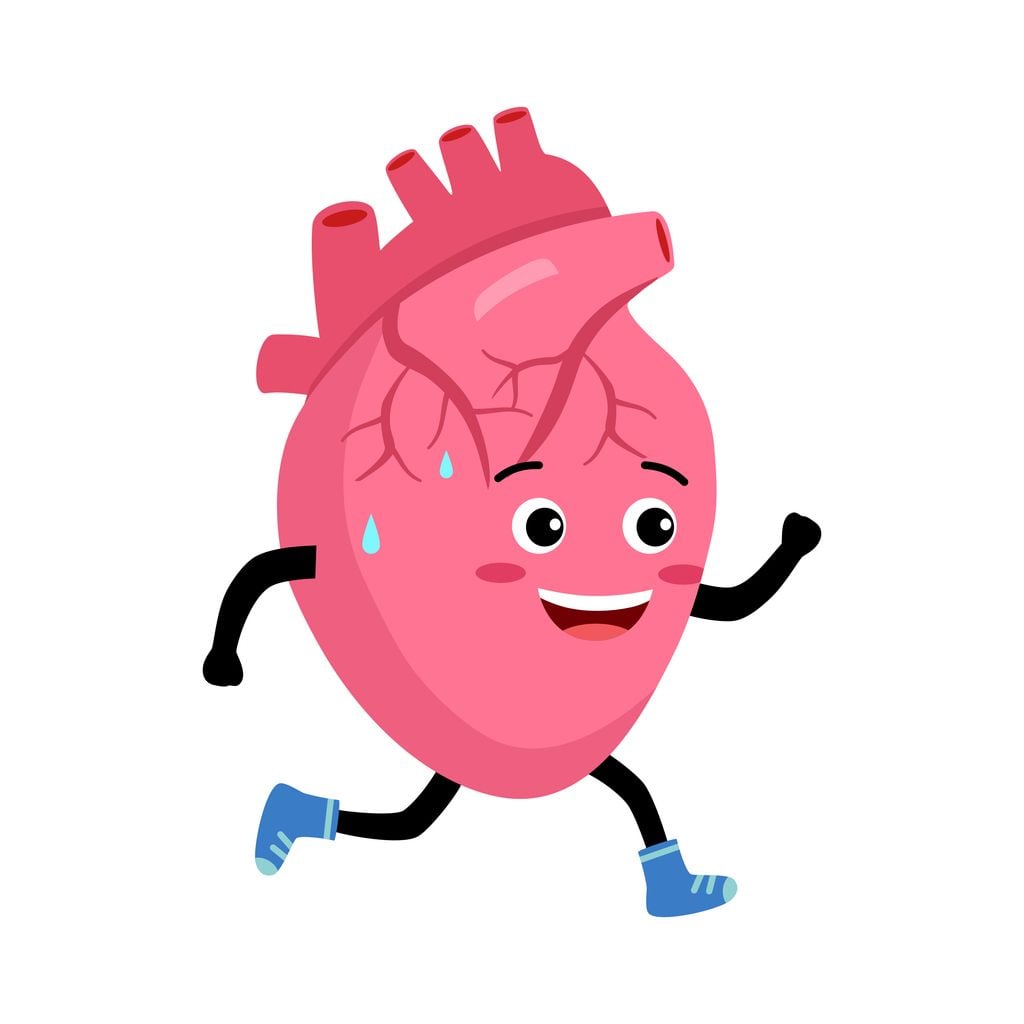Can I still compete? What the new AHA/ACC guidelines say about heart health and sport
)
Guidance on competitive sports participation for athletes with cardiovascular conditions
If you’ve ever wondered whether a heart condition could stop you from doing what you love—training hard, racing, and competing—the newly released 2025 American Heart Association (AHA) and American College of Cardiology (ACC) statement offers fresh perspective and reassurance. This landmark document updates the first AHA/ACC scientific statement published on this topic in 2015. It provides clinical recommendations for competitive athletes with cardiovascular disease (CVD), and it could change how athletes, families, and medical teams think about sports eligibility.
Here’s what you need to know.
A shift from disqualification to empowerment
In years past, having a heart condition often meant automatic disqualification from competitive sport. The focus was on preventing sudden cardiac death (SCD) through a conservative, one-size-fits-all approach. But sports cardiology has come a long way.
Today, the focus is on shared decision-making (SDM)—a process where athletes and their healthcare teams work together to make informed choices based on the individual’s unique condition, personal goals, and level of risk. This shift recognises that athletes are not passive patients but active participants in their own care.
The new guidelines replace blanket restrictions with nuanced, evidence-informed recommendations and practical tools to guide conversations and care.
Who are these guidelines for?
The guidelines apply broadly to:
- Children under 12 starting competitive sports
- Adolescent athletes in school programs
- College and professional athletes
- Masters athletes aged 35 and older
- High-level recreational athletes (think: marathoners, triathletes, CrossFitters)
While primarily aimed at competitive athletes, the advice is useful for anyone training seriously and seeking guidance on how to manage a heart condition safely.
The audience extends beyond doctors—it includes coaches, trainers, school nurses, team staff, and even parents, offering a shared language and approach to decision-making.
What's new in sport classifications and screening?
Rather than rigid sport categories, the updated guidelines now describe sports along a continuum of intensity—from endurance-heavy (like rowing and cycling) to strength-based or high-impact (like football or rugby). This helps clinicians assess the physical demands of each sport when advising athletes.
There’s also fresh guidance on preparticipation screening:
- Electrocardiogram (ECG) screening is considered “reasonable” if supported by qualified interpretation and proper follow-up pathways.
- Emergency Action Plans (EAPs) are highlighted as essential—every venue should have an accessible automated external defibrillator (AED) and trained personnel in cardiopulmonary resuscitation (CPR).
What if I have a heart condition?
The statement covers an extensive range of conditions that affect athletes of all ages. Each section includes clear clinical considerations for participation. Highlights include:
- Cardiomyopathies: Universal bans are no longer recommended - this represents a significant shift from previous recommendations on sport restriction for athletes with hypertrophic cardiomyopathy. Now, participation may be reasonable depending on the severity and monitoring.
- Myocarditis and pericarditis: In some cases, return to sport may be allowed before the previous 3-month restriction period—if recovery markers are met.
- Congenital heart disease: Management is based on anatomy and physiology rather than a single diagnosis.
- Arrhythmias and channelopathies: With careful supervision, some athletes with long QT syndrome or catecholaminergic polymorphic ventricular tachycardia (CPVT) may continue to compete.
- Masters athletes: Special attention is given to older athletes with conditions like atrial fibrillation or coronary artery disease.
For many conditions, sport can still be part of your life—with adjustments, monitoring, and teamwork.
Why shared decision-making matters
The new guidelines make it clear: SDM is not optional—it’s an ethical necessity. Gone are the days when doctors made decisions without considering the athlete’s voice.
Instead, athletes are encouraged to:
- Understand their condition
- Ask questions
- Express their personal values and goals
- Weigh the risks and benefits with their care team
This approach respects autonomy, acknowledges uncertainty, and recognises that people are more than their diagnosis.
Research is changing the game
Over the past decade, new studies have challenged the assumption that exercise always increases risk. For example:
- The LIVE-HCM study showed that many athletes with hypertrophic cardiomyopathy (HCM) who trained vigorously had no increase in adverse outcomes compared with their less active peers.
- Athletes with implanted cardioverter defibrillators (ICDs) are now returning to high-level sport under specialist care.
- COVID-related myocarditis may resolve faster than previously thought, allowing safe return to sport in select cases.
These findings are shaping modern sports cardiology and supporting more inclusive, individualised decisions.
Addressing inequity in sport
Another important update is the acknowledgement of racial and social disparities in cardiovascular care. In the United States, self-identified Black athletes, for example, are more likely to have false positive ECG findings, which has implications for appropriate downstream resources and management of suboptimal screening practices.
The guidelines advocate for:
- Equal access to high-quality screening and follow-up care
- Greater diversity in research
- Sensitivity to the social determinants of health
No athlete should be disadvantaged by gaps in medical understanding or access to appropriate healthcare.
What about the over-35s?
For the first time, there’s a dedicated section for masters athletes—a fast-growing group of competitive adults over 35. As you age, exercise still provides enormous benefit, but heart changes like coronary artery disease, atrial fibrillation, and aortic enlargement become more common.
The new guidelines provide practical algorithms and advice tailored to this age group, helping athletes and clinicians navigate training and competition safely.
Looking ahead
While the guidelines offer valuable tools, they also call for:
- Better data from athlete-specific registries and clinical trials
- Improved training and access to sports cardiology
- Universal AED access and CPR education
- Continued focus on inclusion, equity, and athlete-centred care
Ultimately, not every risk can be eliminated—but risk can be managed, and athlete wellbeing can be protected while preserving the joy and challenge of sport.
Final word
While Australia does not have its own standalone guidance, the AHA/ACC recommendations serve as a reference point for medical professionals across the world in assessing athletes with cardiovascular conditions. Whether you’re a teenager racing cross-country, a pro pushing your limits, or a 60-year-old marathoner—your heart matters, but so does your passion for sport. The new 2025 AHA/ACC guidelines empower athletes and care teams to make informed, collaborative decisions that honour both safety and the spirit of competition.
If you're living with a heart condition, don't assume it's the end of your athletic journey. Instead, ask questions, stay informed, and be part of the decision-making team that helps you keep moving forward—on your terms.
For more information and details on the recommendations for competitive athletes with heart conditions, access the complete 2025 Guidelines here: Scientific statement from the AHA/ACC on clinical considerations for competitive sports participation for athletes with cardiovascular abnormalities
---
References
American College of Cardiology (Mar 06, 2023). LIVE-HCM: Vigorous exercise not associated with increased risk of cardiac events in patients with HCM. Latest in Cardiology. https://www.acc.org/Latest-in-Cardiology/Articles/2023/03/01/22/45/mon-11am-live-hcm-acc-2023
Kim JH, Baggish AL, Levine BD et al. (2025). Clinical considerations for competitive sports participation for athletes with cardiovascular abnormalities: A scientific statement from the American Heart Association and American College of Cardiology. Journal of the American College of Cardiology, 85(10):1059-1108. https://doi.org/10.1016/j.jacc.2024.12.025
Lampert R, Chung EH, Ackerman MJ, et al. 2024 HRS expert consensus statement on arrhythmias in the athlete: Evaluation, treatment, and return to play. Heart Rhythm, 21(10): e151-e252.https://www.heartrhythmjournal.com/article/S1547-5271(24)02560-8/fulltext
Maron BJ, Zipes DP, Kovacs RJ, on behalf of the American Heart Association Electrocardiography and Arrhythmias Committee of the Council on Clinical Cardiology Council on Cardiovascular Disease in the Young, Council on Cardiovascular and Stroke Nursing, Council on Functional Genomics and Translational Biology, and the American College of Cardiology. Eligibility and disqualification recommendations for competitive athletes with cardiovascular abnormalities: preamble, principles, and general considerations: A scientific statement from the American Heart Association and American College of Cardiology. Journal of the American College of Cardiology, 66 (2015):2343 2349, doi: 10.1016/j.jacc.2015.09.032
---
Author: Kara Gilbert, KMG Communications
| Tags:Heart Health GuidelinesHeart Health for AthletesHH4A |

)